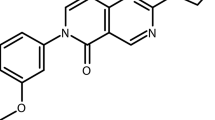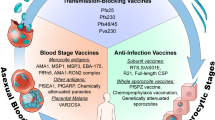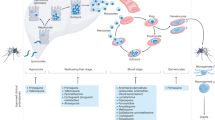Key Points
-
Currently available medicines against Plasmodium falciparum are largely fixed-dose artemisinin-based combination therapies; the combination serves to protect individual medicines against resistance. For Plasmodium vivax radical cure, the standard of care is still primaquine, with no major breakthroughs in the past 60 years.
-
New medicines that block transmission and dormant reservoirs of malaria parasite, such as the hypnozoite of P. vivax, will have an important role in the eradication of malaria.
-
Next-generation therapies after artemisinin include new synthetic endoperoxides. With the emergence of artemisinin resistance, it is important to confirm that these medicines will have activity against artemisinin-resistant strains.
-
New targets can come from an increase in our understanding of the parasite genome. More recently, screens against the whole parasite have also been successful. Screens against some pathways, such as purine and pyramidine metabolism, and mitochondrial electron transport, have produced interesting chemical series.
-
Laying out what a new medicine has to achieve to be successful (that is, determining the target product profile) is an important and often underestimated step in drug discovery and development. A key factor in antimalarial medicines is to ensure safety, especially as they are administered in countries where adverse-event reporting is often limited.
-
Over the past 10 years, there has been a change in the way medicines for malaria are discovered and developed. Increased interest from the pharmaceutical industry and charitable foundations has supported the work of the public–private partnerships in bringing forward a portfolio of new medicines, which will support the eradication agenda.
Abstract
Despite being one of the most prevalent tropical diseases, for many years malaria was not a commercial priority for the pharmaceutical industry. However, in response to the emergence and spread of resistance to the available antimalarial drugs, there has been a renaissance in the discovery and development of new medicines to control the disease in the last few years. The persistent threat of resistance means that new molecules with novel mechanisms of action are continually required. Furthermore, the recent call for the elimination and eradication of malaria has prompted an extension of the stages of the life cycle of malaria parasites that should be targeted by new molecules. Recent advances in genome-based technologies and in in vitro screening of whole parasites have broadened the range of therapeutic targets and are accelerating the development of a new generation of treatments for both malaria control and eradication.
This is a preview of subscription content, access via your institution
Access options
Subscribe to this journal
Receive 12 print issues and online access
$209.00 per year
only $17.42 per issue
Buy this article
- Purchase on Springer Link
- Instant access to full article PDF
Prices may be subject to local taxes which are calculated during checkout



Similar content being viewed by others
References
World Health Organization. World Malaria Report 2008 (Geneva, Switzerland) The World Health Organization website [online] (2008).
Gallup, J. L. & Sachs, J. D. The economic burden of malaria. Am. J. Trop. Med. Hyg. 64, 85–96 (2001).
The World Bank. World Bank Booster Programme for Malaria Control in Africa. The World Bank website [online] (2007).
Guinovart, C. et al. Insights into long-lasting protection induced by RTS,S/AS02A malaria vaccine: further results from a phase IIb trial in Mozambican children. PLoS ONE 4, e5165 (2009).
Roberts, L. & Enserink, M. Did they really say.. eradication? Science 318, 1544–1545 (2007).
Price, R. N. et al. Vivax malaria: neglected and not benign. Am. J. Trop. Med. Hyg. 77 (Suppl. 6) 79–87 (2007). A key reference that provides an update on the incidence of P. vivax malaria, showing that the incidence, severity and downstream complications of the disease are often underestimated.
Hemmer, C. J. et al. Stronger host response per parasitized erythrocyte in Plasmodium vivax or ovale, than in Plasmodium falciparum malaria. Trop. Med. Intl Health 11, 817–823 (2006).
Poespoprodjo, J. R. et al. Vivax malaria: a major cause of morbidity in early infancy. Clin. Infect. Dis. 48, 1704–1712 (2009).
Mayxay, M., Pukrittayakamee, S., Newton, P. N. & White, N. J. Mixed-species malaria infections in humans. Trends Parasitol. 20, 233–240 (2004).
Krotoski, W. A. et al. Relapses in primate malaria: discovery of two populations of exoerythrocytic stages. Preliminary note. BMJ 280, 153–154 (1980).
Chin, W., Contacos, P. G., Coatney, R. G. & Kimbal, H. R. Naturally acquired quotidian-type malaria in man transferable to monkeys. Science 149, 865 (1965).
Cox-Singh, J. et al. Plasmodium knowlesi malaria in humans is widely distributed and potentially life threatening. Clin. Infect. Dis. 46, 165–171 (2008).
Sinden, R. E. in Malaria: Parasite Biology, Pathogenesis and Protection (ed. Sherman, I. W.) 25–48 (ASM Press, Washington, D. C., 1998).
Olliaro, P. L. & Yuthavong, Y. An overview of chemotherapeutic targets for antimalarial drug discovery. Pharmacol. Ther. 81, 91–110 (1999).
Luo, X. D. & Shen, C. C. The chemistry, pharmacology and clinical applications of qinghaosu (artemisinin) and its derivatives. Med. Res. Rev. 7, 29–52 (1987).
Meshnick, S. R., Taylor, T. E. & Kamchonwongpaisan, S. Artemisinin and the antimalarial endoperoxides: from herbal remedy to targeted chemotherapy. Microbiol. Rev. 60, 301–315 (1996).
White, N. J. Antimalarial drug resistance and combination chemotherapy. Philos. Trans. R. Soc. Lond. B. Biol. Sci. 354, 739–749 (1999).
World Health Organization. Guidelines for the Treatment of Malaria. The World Health Organization website [online] (2006).
Muehlens, P. Die Behandlung der natuerlichen menschlichen Malaria-infektionen mit Plasmochin. Arch. Shiffs-u. Troppenhyg. 30, 25–32 (1926).
Beutler, E., Duparc, S. & G6PD Deficiency Working Group. Glucose-6-phosphate dehydrogenase deficiency and antimalarial drug development. Am. J. Trop. Med. Hyg. 77, 779–789 (2007). G6PD deficiency protects patients against malaria infection, but some key medicines in this group that are traditionally used in malaria treatment, such as dapsone and primaquine, cause haemolysis. This review summarizes the latest advances in the field.
Breukner, R. P., Lasseter, K. C., Lin, E. T. & Schuster, B. G. First-time-in-humans safety and pharmacokinetics of WR238605, a new antimalarial. Am. J. Trop. Med. Hyg. 58, 645–649 (1998).
Dondorp, A., Nosten, F., Stepniewska, K., Day, N. & White, N. Artesunate versus quinine for treatment of severe falciparum malaria: a randomised trial. Lancet 366, 717–725 (2005).
Gomes, M. F. et al. Pre-referral rectal artesunate to prevent death and disability in severe malaria: a placebo-controlled trial. Lancet 373, 522–523 (2009).
Aponte, J. J. et al. Efficacy and safety of intermittent preventive treatment with sulfadoxine-pyrimethamine for malaria in African infants: a pooled analysis of six randomised, placebo-controlled trials. Lancet 17 Sept 2009 (doi:10.1016/S0140-6736(09)61258-7).
Nakato, H., Vivancos, R. & Hunter, P. R. A systematic review and meta-analysis of the effectiveness and safety of atovaquone proguanil (Malarone) for chemoprophylaxis against malaria. J. Antimicrob. Chemother. 60, 929–936 (2007).
Noedl, H. et al. Evidence of artemisinin-resistant malaria in western Cambodia. New Engl. J. Med. 359, 2619–2620 (2008).
Meshnick, S. R. Artemisinin: mechanisms of action, resistance and toxicity. Int. J. Parasitol. 32, 1655–1660 (2002).
Dondorp, A. M. et al. Artemisinin resistance in Plasmodium falciparum malaria. New Engl. J. Med. 361, 455–467 (2009). This paper provides the most recent findings on artemisinin resistance in the Thai–2013 Cambodia border region.
Cosledan, F. et al. Selection of a trioxaquine as an antimalarial drug candidate. Proc. Natl Acad. Sci. USA 105, 17579–17584 (2008).
Ellis, G. L. et al. Two-step synthesis of achiral dispiro-1,2,4,5-tetraoxanes with outstanding antimalarial activity, low toxicity, and high-stability profiles. J. Med. Chem. 51, 2170–2177 (2008).
Vennerstrom, J. L. et al. Identification of an antimalarial synthetic trioxolane drug development candidate. Nature 430, 900–904 (2004). This study described the first synthetic endoperoxide to enter clinical development, arterolane (now known as RBx-11160; Ranbaxy). This molecule showed that simpler versions of artemisinin can be produced and removed the dependence on plant-based cultivation for the next generation of antimalarials.
Ohrt, C. et al. Assessment of azithromycin in combination with other antimalarial drugs against Plasmodium falciparum in vitro. Antimicrob. Agents Chemother. 46, 2518–2524 (2002).
Dunne, M. W. et al. A multicenter study of azithromycin, alone and in combination with chloroquine, for the treatment of acute uncomplicated Plasmodium falciparum malaria in India. J. Infect. Dis. 191, 1582–1588 (2005).
Green, M. D. Antimalarial drug resistance and the importance of drug quality monitoring. J. Postgrad. Med. 52, 288–290 (2006).
Gardner, M. J. et al. Genome sequence of the human malaria parasite Plasmodium falciparum. Nature 419, 498–511 (2002).
Carlton, J. M. et al. Comparative genomics of the neglected human malaria parasite Plasmodium vivax. Nature 455, 757–763 (2008).
Zhou, Y. et al. Evidence-based annotation of the malaria parasite's genome using comparative expression profiling. PLoS ONE 3, e1570 (2008).
Aguero, F. et al. Genomic-scale prioritization of drug targets: the TDR Targets database. Nature Rev. Drug Discov. 7, 900–907 (2008).
Grundner, C. et al. Structural basis for selective inhibition of Mycobacterium tuberculosis protein tyrosine phosphatase PtpB. Structure 15, 499–509 (2007).
Plouffe, D. et al. In silico activity profiling reveals the mechanism of action of antimalarials discovered in a high-throughput screen. Proc. Natl Acad. Sci. USA 105, 9059–9064 (2008). This paper summarizes the results and analyses of the high-content cellular screen used to find new medicines against P. falciparum . This was the first large-scale (2 million compounds) antiparasitic compound screen, and arguably launched a new era for malaria screens and parasitology thinking.
Mazier, D., Rénia, L. & Snounou, G. A pre-emptive strike against malaria's stealthy hepatic forms. Nature Rev. Drug Discov. (in the press).
Luke, T. C. & Hoffman S. L. Rationale and plans for developing a non-replicating metabolically active radiation attenuated Plasmodium falciparum sporozoite vaccine. J. Exp. Biol. 206, 3803–3808 (2003).
Udomsangpetch, R., Kaneko, O., Chotivanich, K. & Sattabongkot, J. Cultivation of Plasmodium vivax. Trends Parasitol. 24, 85–88 (2008).
Olliaro, P. & Wells, T. N. C. The global portfolio of new antimalarial medicines under development. Clin. Pharm. Ther. 85, 584–595 (2009).
Yuthavong, Y., Kamchonwongpaisan, S., Leasrtsakulpanich, U. & Chitnumsub, P. Folate metabolism as a source of molecular targets for antimalarials. Future microbiol. 1, 113–135 (2006).
Yeates, C. L. et al. Synthesis and structure–activity relationships of 4-pyridones as potential antimalarials. J. Med. Chem. 51, 2845–2852 (2008).
Kelly, J. X. et al. Discovery of dual function acridones as a new antimalarial chemotype. Nature 459, 270–273 (2009).
Baldwin, J. et al. High-throughput screening for potent and selective inhibitors of Plasmodium falciparum dihydroorotate dehydrogenase. J. Biol. Chem. 280, 21847–21853 (2005).
Gujjar, R. et al. Identification of a metabolically stable triazolopyrimidine-based dihydroorotate dehydrogenase inhibitor with antimalarial activity in mice. J. Med. Chem. 52, 1864–1872 (2009).
Larson, E. T. et al. Structures of substrate- and inhibitor-bound adenosine deaminase from a human malaria parasite show a dramatic conformational change and shed light on drug selectivity. J. Mol. Biol. 381, 975–988 (2008).
Taylor Ringia, E. A. & Schramm, V. L. Transition states and inhibitors of the purine nucleoside phosphorylase family. Curr. Top. Med. Chem. 5, 1237–1258 (2005).
Madrid, D. C. et al. Plasmodium falciparum purine nucleoside phosphorylase is critical for the viability of malaria parasites. J. Biol. Chem. 283, 35899–35907 (2008).
Waller, R. F. & McFadden, G. I. The apicoplast: a review of the derived plastid of apicomplexan parasites. Curr. Issues Mol. Biol. 7, 57–79 (2005). This review summarizes the identification of the apicoplast and the targets that have emerged.
Freundlich, J. S. et al. X- ray structural analysis of Plasmodium falciparum enoyl acyl carrier protein reductase as a pathway toward the optimization of triclosan antimalarial efficacy. J. Biol. Chem. 282, 25436–25444 (2007).
Doerig, C. et al. Protein kinases of malaria parasites: an update. Trends Parasitol. 24, 570–577 (2008).
Patel, V. et al. Identification and characterization of small molecule inhibitors of a class I histone deacetylase from Plasmodium falciparum. J. Med. Chem. 52, 2185–2187 (2009).
Kerr, I. D. et al. Structures of falcipain-2 and falcipain-3 bound to small molecule inhibitors: implications for substrate specificity J. Med. Chem. 52, 852–857 (2009).
Yeoh, S. et al. Subcellular discharge of a serine protease mediates release of invasive malaria parasites from host erythrocytes. Cell 131, 1072–1083 (2007).
Wengelnik, K. et al. A class of potent antimalarials and their specific accumulation in infected erythrocytes. Science 295, 1311–1314 (2002).
Acknowledgements
We thank our colleagues on the staff and External Scientific Advisory Committee for MMV and our research and development partners, and the various governments, foundations and charities that have provided the finance required to operate this PPP. We apologize to those whose work was not cited due to space constraints.
Author information
Authors and Affiliations
Corresponding author
Related links
Related links
FURTHER INFORMATION
Affordable Medicines Facility for Malaria
Global Fund to Fight AIDS, Tuberculosis and Malaria
Glossary
- Artemisinin-based combination therapy
-
(ACT). A treatment regimen for malaria, usually comprising two medicines, one of which is artemisinin or one of its derivatives. ACTs come in two varieties: co-packaged or the preferred co-formulated.
- Merozoite
-
The life cycle stage in which the malaria parasite has the ability to penetrate and infect red blood cells. The parasite expresses receptors and proteolytic enzymes on its surface to facilitate this process.
- Hypnozoite
-
The dormant liver stage of P. vivax and P. ovale. The parasite remains in hepatocytes after the other liver-stage parasites have replicated and released their merozoites. Hypnozoites are the source of malaria relapses.
- Gametocyte
-
The male and female sexual stages of the malaria parasite. Formed in the red blood cells, it remains dormant unless taken up by a mosquito, in which it forms gametes, which fuse to form the ookinete.
- Fever clearance time
-
The time taken for body temperature to return to normal levels after the first dose of an antimalarial has been given.
- Parasite clearance time
-
The time taken for asexual parasites to no longer be detectable microscopically after the first dose of an antimalarial has been given.
- Causal prophylactic activity
-
Effect of antimalarial drugs that prevent sporozoite infection or replication of parasites in the liver, in contrast to suppressive prophylaxis in which replication of parasites in the blood is prevented.
- ICH
-
International Conference on Harmonisation of Technical Requirements for Registration of Pharmaceuticals for Human Use, which issues guidelines for good laboratory and clinical practice.
- Reticulocyte
-
An immature red blood cell.
- Apicoplast
-
An organelle that is present in malaria parasites and is thought to be a relic of the chloroplast. It contains DNA which codes for ∼30 plant-like proteins and bacteria-like ribosomes. A further 500 nuclear-encoded proteins of unknown phylogenetic origin are predicted to be targeted to this organelle.
- Radical cure
-
The elimination from patients infected with P. vivax or P. ovale of all parasites, including the dormant liver hypnozoites. Unless this is done, patients will subsequently relapse.
Rights and permissions
About this article
Cite this article
Wells, T., Alonso, P. & Gutteridge, W. New medicines to improve control and contribute to the eradication of malaria. Nat Rev Drug Discov 8, 879–891 (2009). https://doi.org/10.1038/nrd2972
Published:
Issue Date:
DOI: https://doi.org/10.1038/nrd2972
This article is cited by
-
Synthesis and in silico ADME/Tox profiling studies of heterocyclic hybrids based on chloroquine scaffolds with potential antimalarial activity
Parasitology Research (2022)
-
Tetrahydroisoquinoline-Based Non-Peptidomimetic Plasmepsin Inhibitors
Chemistry of Heterocyclic Compounds (2020)
-
Synthesis of 2-aminopyridopyrimidinones and their plasmepsin I, II, IV inhibition potency
Chemistry of Heterocyclic Compounds (2020)
-
Role of Trifluoromethyl Substitution in Design of Antimalarial Quinolones: a Comprehensive Review
Topics in Current Chemistry (2019)
-
Compounds from African Medicinal Plants with Activities Against Selected Parasitic Diseases: Schistosomiasis, Trypanosomiasis and Leishmaniasis
Natural Products and Bioprospecting (2018)



